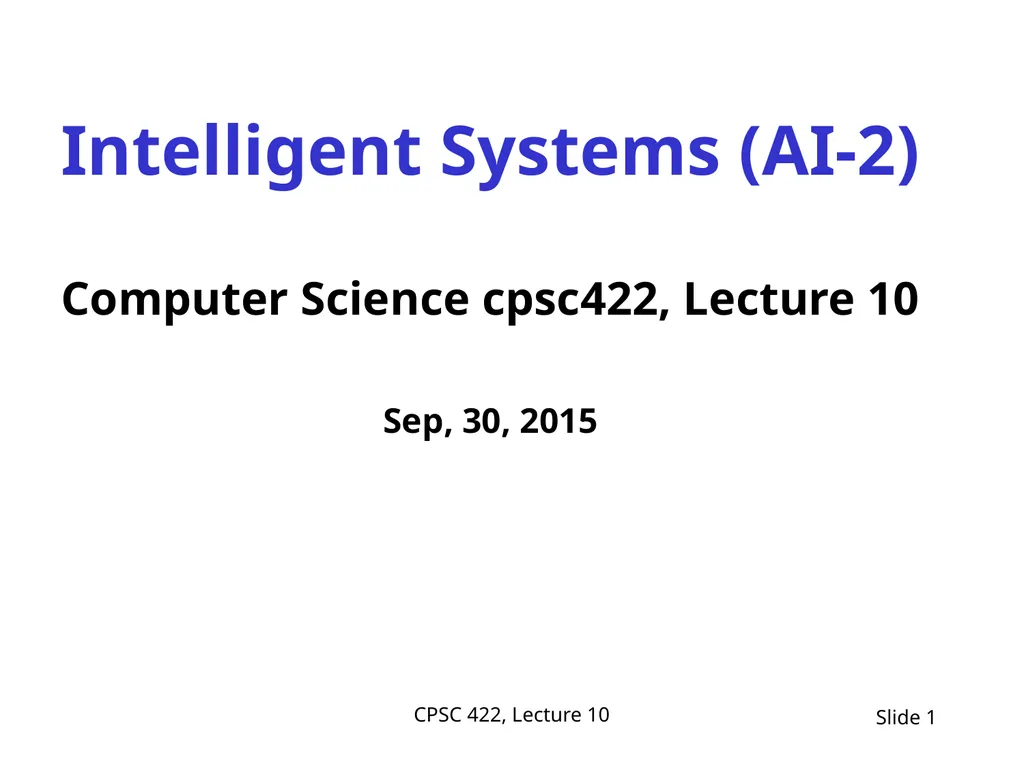
CPSC 422, Lecture 10 Slide 1 Intelligent Systems
Author: tawny-fly | Published: 2025-05-28
Description: CPSC 422, Lecture 10 Slide 1 Intelligent Systems (AI-2) Computer Science cpsc422, Lecture 10 Sep, 30, 2015 CPSC 422, Lecture 10 2 Lecture Overview Finish Reinforcement learning Exploration vs. Exploitation On-policy Learning (SARSA)
Download Presentation
Download the PPT/PDF: Download
Transcript:
Loading transcript…